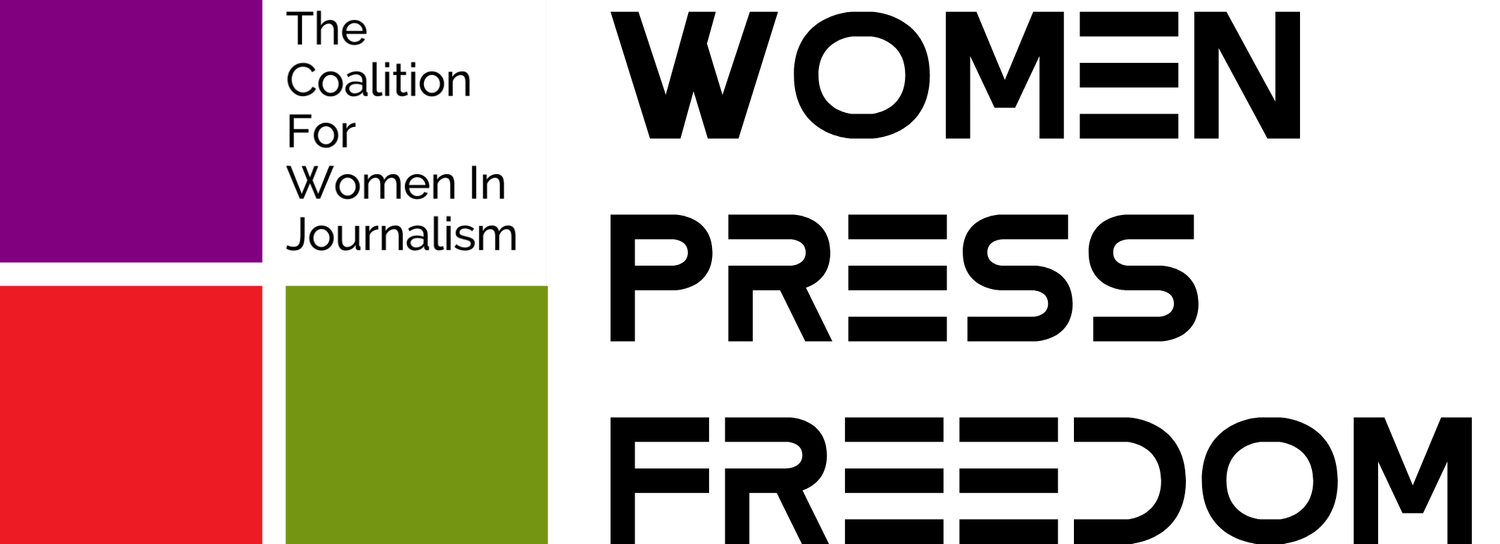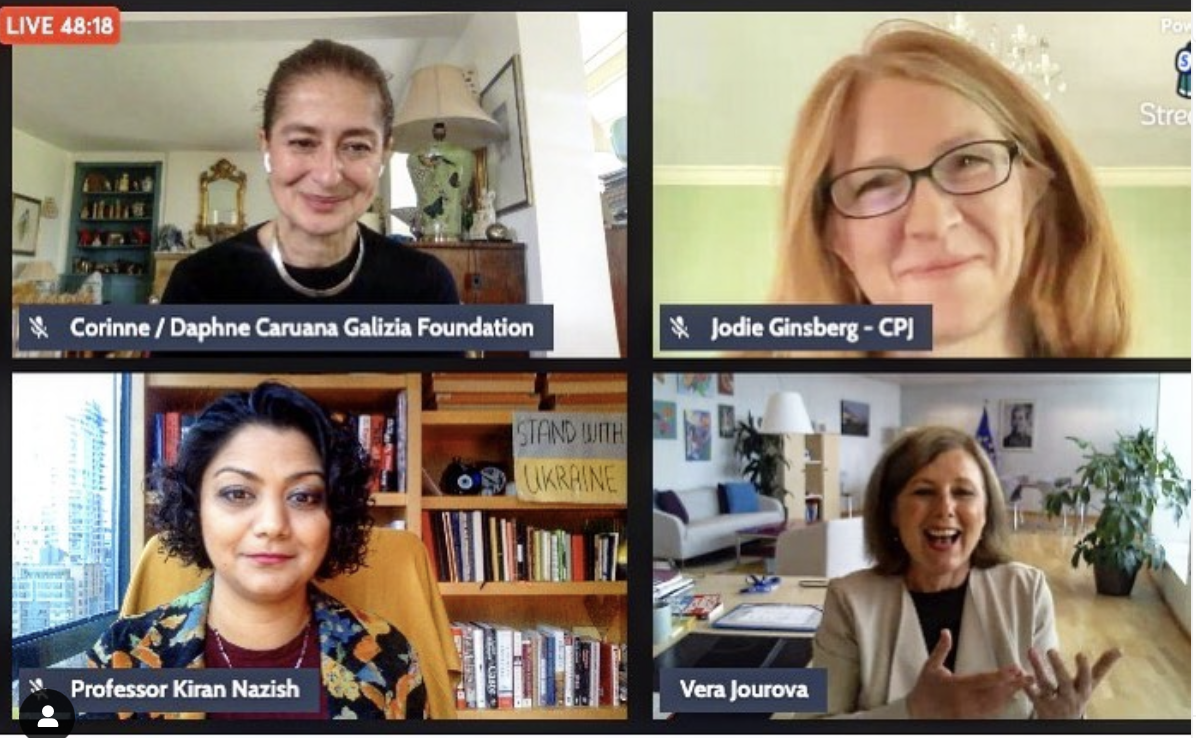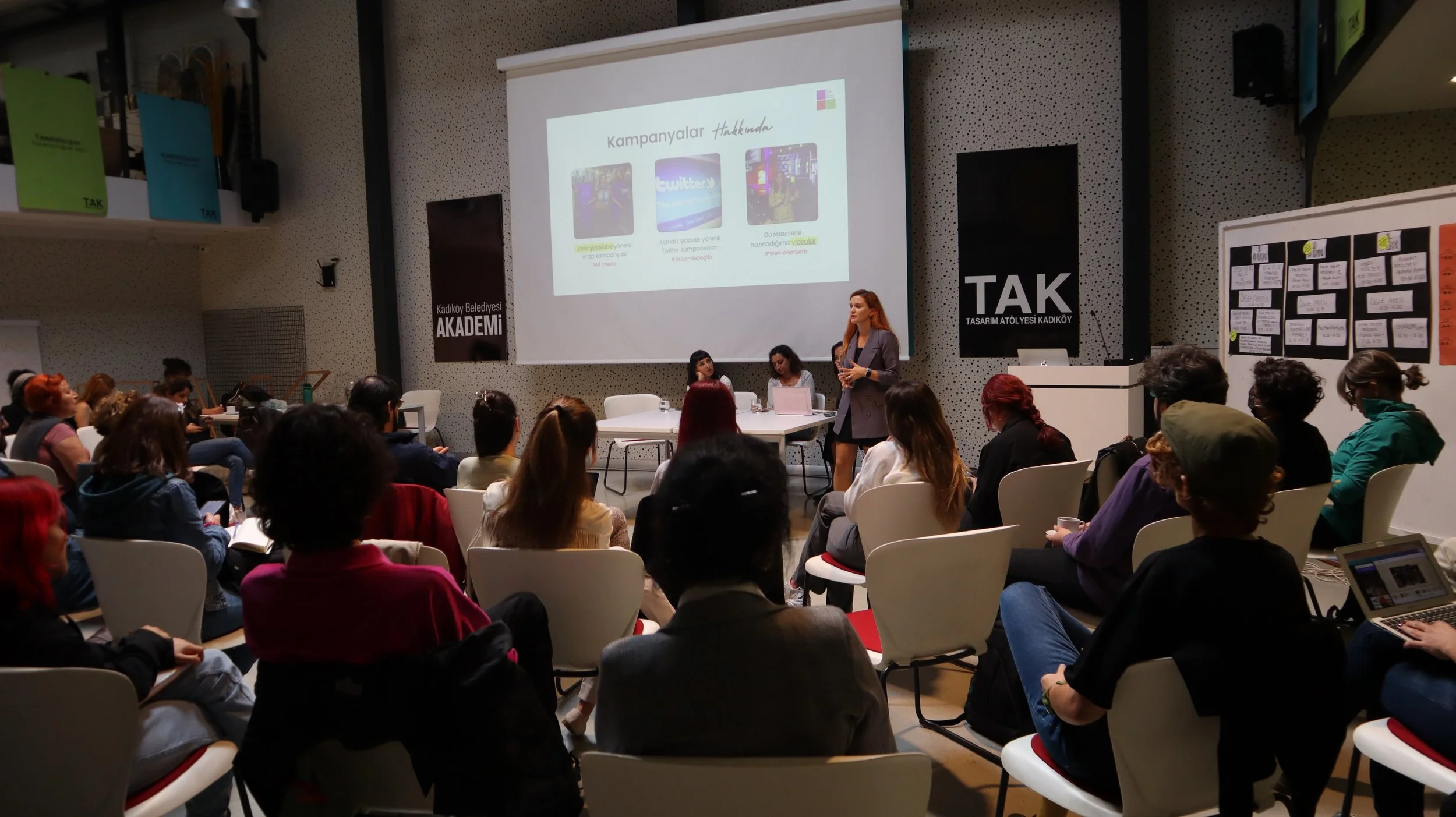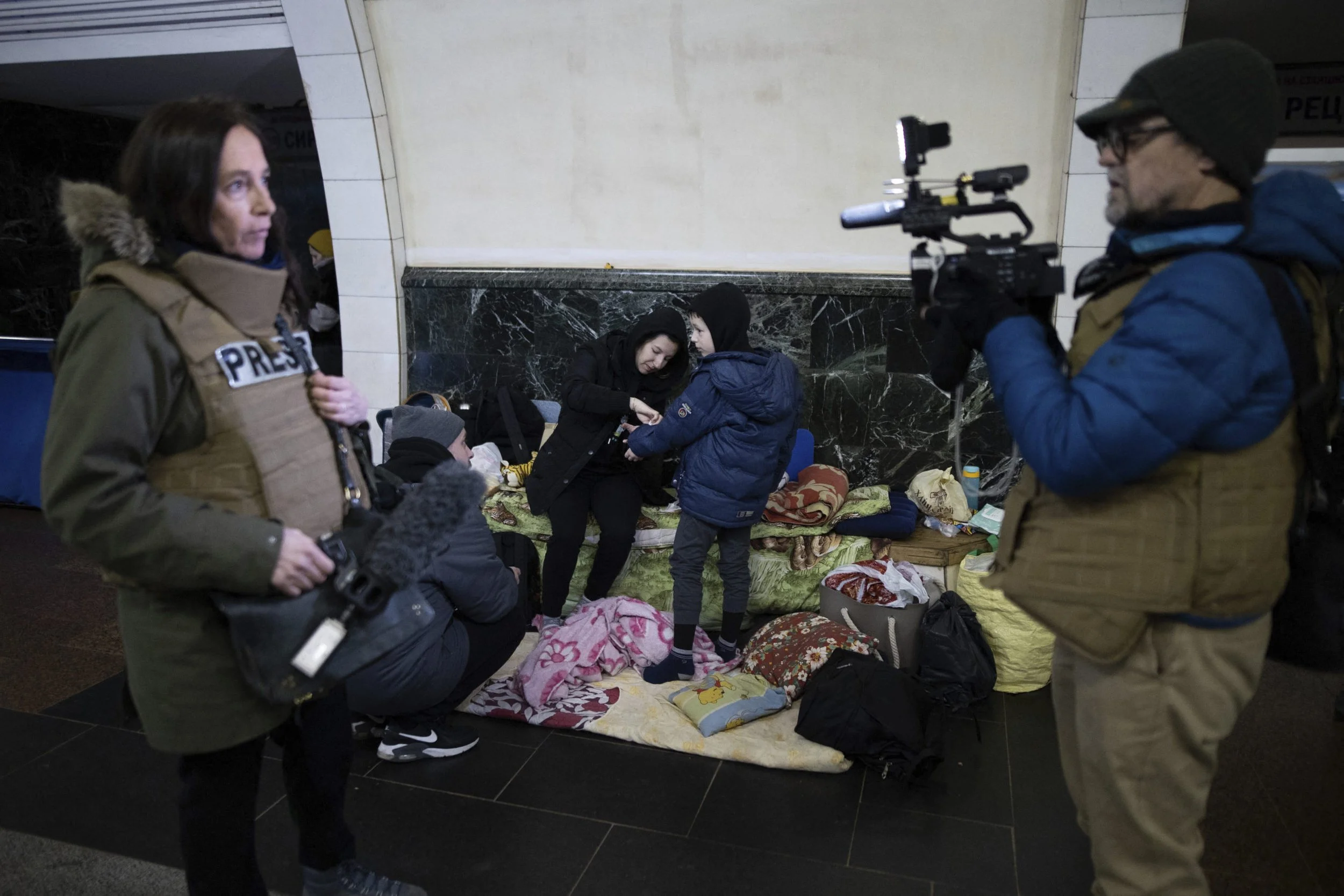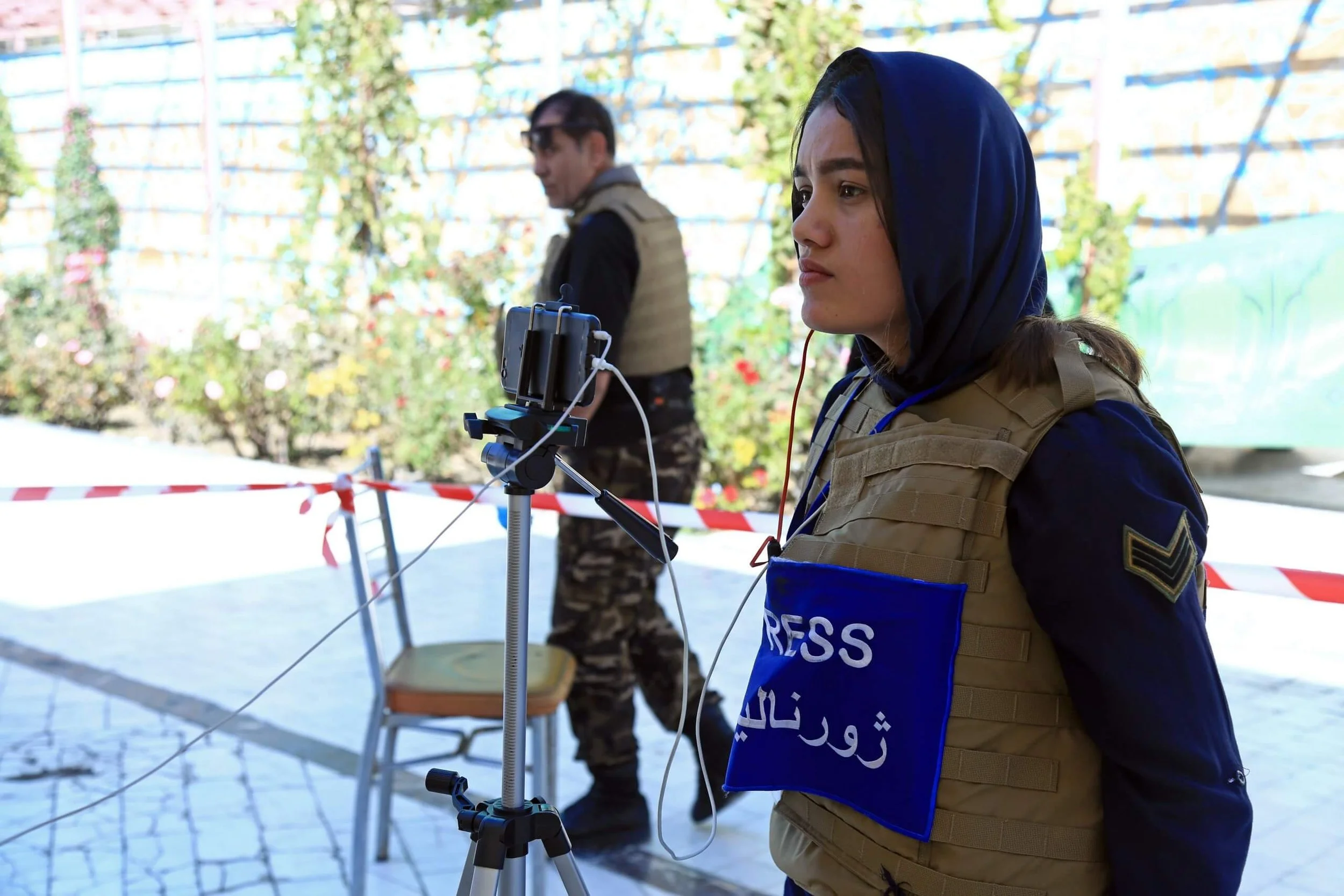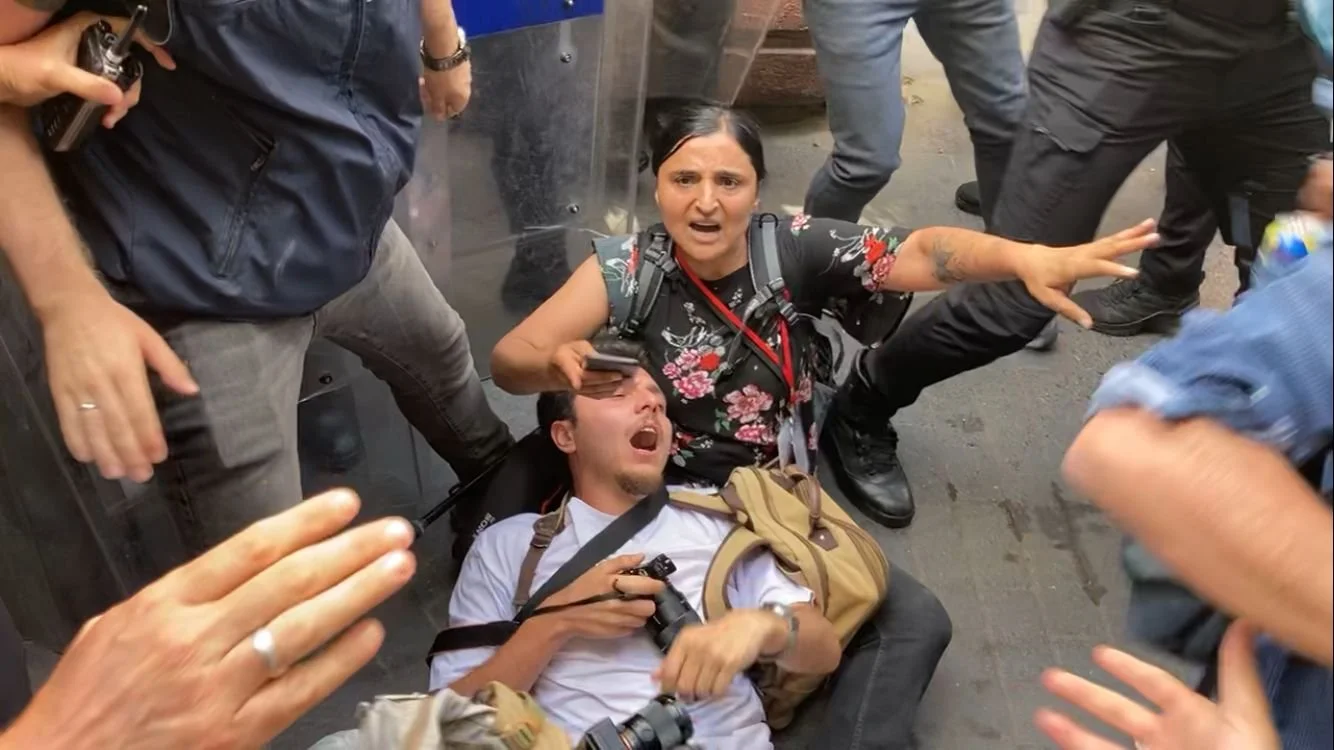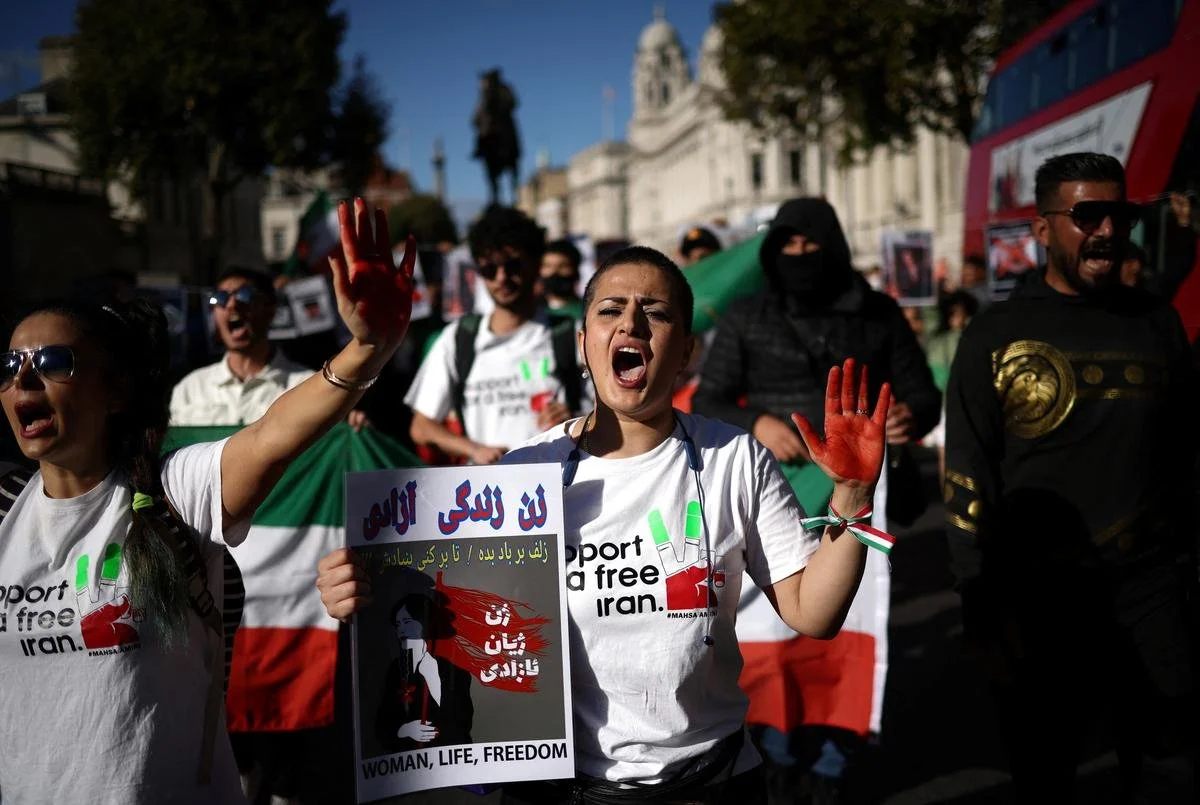2022 Annual Press Freedom Review
The year of courage and revolution
CFWIJ’s Impact in 2022
Kiran Nazish — journalist and founding director at the Coalition For Women In Journalism. Vera Jourova --Vice President of the European Commission for Values and Transparency, Jodie Ginsberg — President of Committee To Protect Journalists and Corinne Vella — sister of Daphne Caurana Galizia and lead at The Daphne Caruana Galizia Foundation
The Coalition For Women In Journalism is a global non-profit organization that supports and advocates for women and LGBTQ+ journalists around the world. Our Press Freedom Newsroom covers violations from 128 countries. These include professional and work related harassment, violence encountered during an assignment, imprisonments, detentions, SLAPP cases, police violence, assaults and murders. Alongside the global monitoring and reporting, we are also involved in exploring ways to support, safety and equity related issues. Since 2019, the CFWIJ has supported and advocated for more than 2,000 women journalists who encountered such circumstances. CFWIJ's work has led to more than 600 evacuations and relocations of persecuted women and LGBTQ+ journalists from Afghanistan, Ukraine, Iran, Mexico, Egypt, Iraq, Syria, Pakistan, and Turkey.
CFWIJ’s Damla Tarhan presenting at Newslab.
2022: Highest Number of Murdered and Imprisoned Women Journalists
As of December 14, 2022, at least 104 women journalists are behind bars. 41 of them were arrested in 2022 only, while some journalists were released. Iran is currently the top jailer of women journalists with 37 arrests this year.
- Women Journos Behind Bars
- Women Journos Behind Bars
In 2022, CFWIJ documented the highest number of arrests and murders, as of December 14. It is expected to document even more cases by the end of this year.
2022 took its toll on the full range for women journalists and their right to report freely and safely. In 2022, the world witnessed a war in Ukraine , the uprising of women in Iran, a tragic bolstering of conflict in countries like Ethiopia among other major political upheavals. On the frontline of all these tumultuous events, women journalists have reported the news often with an unprecedented levels of danger, and a heightened number of attacks on their own safety and ability to report. We have seen and documented increasing numbers of arrests, detentions, and other forms of police aggression against women journalists. These attacks also lead to a tragic number of killings of female journalists in the line of duty. Many were arrested for exposing facts while numerous others were targeted by online troll campaigns, a form of harassment that increasingly targets women, gender, and diversity in the profession. In 2022, the safety of women in the media industry diminished significantly.
In 2022, the CFWIJ documented the murders of 12 women journalists, the highest number killed in a single year since the CFWIJ began documenting violence against women journalists around the world in 2019. Four of these murders were carried out in Mexico alone, making it the country with the highest number of female journalists killed in 2022. Three women journalists were killed in Ukraine, two in Palestine, and one in each Iraq, Chile and Afghanistan.
Following the eruption of protests in Iran over the tragic death of Mahsa Amini, the number of imprisoned female journalists in the world increased by 64%. Although some journalists have been released, at least 104 still await being released, 64 of whom were arrested in 2022 alone. Since 2019, when CFWIJ began documenting incidents of violence and press freedom attacks against women journalists, this is the highest number of imprisonments recorded in a single year.
Russia-Ukraine: Reporting A War From Frontlines
- Total
- Ukraine
- Total
- Ukraine
- Detention
- Arbitrary Denial of Access
- Legal harassment/Civil Lawsuit
- State Oppression
- Abduction
- Detention
- Arbitrary Denial of Access
- Legal harassment/Civil Lawsuit
- State Oppression
- Abduction
On February 24th, 2022, following weeks of escalating tensions, Russia launched a full-scale military invasion of Ukrainian territory. The military operation came amid growing NATO influence in the Eastern European region and increasing Western sanctions imposed on Russia to deter its state from escalating against Ukraine. After several months of diplomatic engagements failed, President Vladimir Putin announced an “operation” to “protect people who have been subjected to abuse and genocide by the Kyiv regime for eight years.”
As the Russian invasion forces continued to make advances in Ukraine, several media workers in the country, local and foreign, came under attack, and three women journalists were killed.
On March 14th, Fox News Ukrainian journalist Oleksandra (Alexandra) Kuvshynova and camera operator Pierre Zakrzewski were killed by incoming fire from Russian troops near the village of Horenka, outside Kyiv.
On March 24th, Oksana Baulina, a reporter for the independent Latvia-based investigative news website The Insider, lost her life amid a Russian offensive against the Ukrainian capital, Kyiv. The incident took place in Kyiv’s Podilskyi district, where she was present to report on Russian shelling.
On April 29th, Vira Hyrych, a journalist working for Radio Free Europe/ Radio Liberty (RFE/RL) in Kyiv, was found dead one day after Russian forces attacked the residential building where she was living in the Ukrainian capital.
In Russia, at least 35 female reporters were subjected to violations such as detention, legal harassment and abduction. 20 were detained for covering anti-war rallies against Russia's invasion of Ukraine across the country, and at least five women journalists were targeted by the state through legislation.
On June 17th, Russia banned six women journalists from the United Kingdom from entering the country, claiming they were “involved in the deliberate dissemination of false and one-sided information". The complete list issued by Kremlin authorities names 49 prominent figures from the UK, including 29 journalists, were blacklisted.
Iran: Top Jailer of Women Journalists
It’s been both hard and uplifting to be in touch with courageous #womenjournalists in #iran. Here’s what one of them told @CFWIJ this week. A reminder that #iran is one of the biggest jailers for #womenjournalists and activists, but these women are tough women! #freeThePress pic.twitter.com/5ARtw5cbI8
— Kiran Nazish (@kirannazish) September 26, 2022
“Almost all of my press colleagues from the newspaper are now living away from their homes. There is a very real fear of arrest and intimidation for them even if journalists are not reporting at the moment. Those of us who have children, want to be safe not for ourselves but our children.”
- Iranian journalist by initials of M. V.












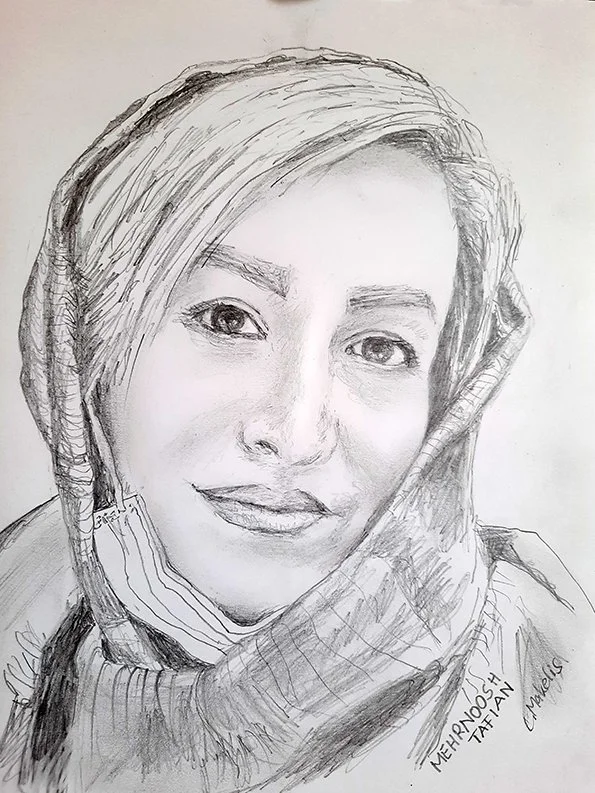















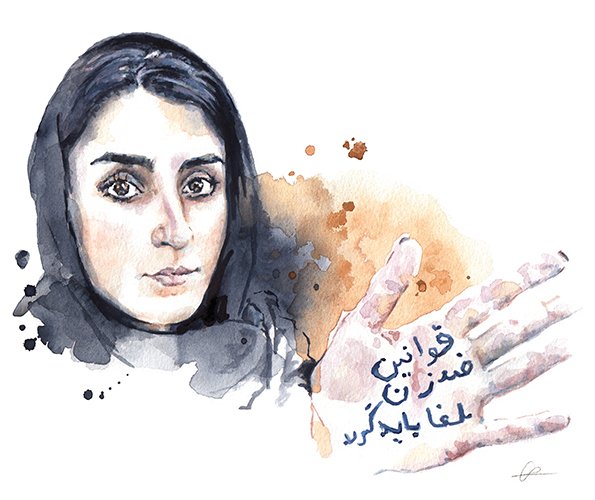













- Iran
- Turkey
- China
- Iran
- Turkey
- China
In 2022, after years of fighting for their rights, women ignited the first spark of a revolution in Iran. Protests broke out all over the country following the murder of Mahsa Amini on September 16, 2022, and women journalists who have been following the protests are being targeted by authorities who wish to silence them.
At least 25 women have been arrested for reporting on the situation since the protests began on September 16, increasing the total number of female journalists incarcerated in Iran in 2022 from 10 to 35. While there have been at least five releases, Iran is the top jailer of women journalists around the world in 2022. The CFWIJ has been closely monitoring the situation on the ground, as well as the threats and abuse aimed at journalists in Iran that come from outside of the country. Our sources have informed us that numerous journalists were arrested by the Islamic Republic immediately after Mahsa Amini was killed, and this procedure continues until today. Journalists in Iran have told us that they are followed by unidentified men, often before being detained and interrogated.
Organized internet trolling is also being used as a weapon to spread misinformation and attack female journalists, even those who are not reporting from Iran. In 2022, the CFWIJ noted at least 12 cases of organized online trolling campaigns targeting women who are exposing the situation in Iran from outside of the country, through their sources on the ground. New York Times reporter Faranah Fassihi and Executive director of Gender Equality Org Sherry Hakimifaced some of the most vicious trolling campaigns, which, in some cases, were so aggressivee that they became a Twitter Trend.
Negar Mortazavi, another journalist who faced online trolling, was also the target of threats in the physical world. The day that Negar was scheduled to attend a panel discussion focused on the current situation in Iran at the University of Chicago, the campus received bomb threats.
It is currently very difficult to gain access to clear communication in Iran. Following their arrest, many journalists are not allowed to make phone calls to either their lawyers or their families, and authorities often provide incorrect information to relatives and legal representatives who inquire about their location. To make matters worse, the internet is blocked in many areas of the country, which has severely limited the ability of many journalists and activists to request aid. Many female journalists across different cities in Iran have gone into hiding, but the CFWIJ recognizes that not all journalists have the option of seeking shelter with family or friends. The well-being of female journalists in Iran, especially those who have nowhere to hide, is at great risk.
Afghanistan: Amidst Escalating Threats and Growing Fear, Women Prove Resilient
"I am in a very dangerous situation. My life is in danger now. The Taliban are threatening me. They will kill me. I can't sleep for a long time. I can't hear from my family. I don't know if they are alive or killed by the Taliban."
- Afghan woman journalist
In Afghanistan, CFWIJ evacuated the number of…
410+ journalists, activists, women's rights advocates, and other women.
Since Kabul fell to the Taliban in 2021, the CFWIJ received an influx of pleas for help from Afghan journalists and activists. The majority of these requests for aid came from women, many of whom are at high risk under the new Taliban regime. The threatened, yet resilient, Afghan women journalists shared stories of despair, fear, and silence. The Afghan media, which once thrived even amidst the worst of threats such as murder and imprisonment, is now struggling to survive under Taliban rule. In 2022, the CFWIJ assisted more than 450 journalists, women leaders and activists from Afghanistan to safety.
The Taliban takeover has crushed many of the dreams that Afghan women have been working towards for the last two decades, and journalists have risked their lives to provide an account of the war crisis and the atrocities taking place under Taliban rule. They have shown courage in the face of fear, intimidation, and threats of violence, but a tragic number of journalists have been severely injured and even lost their lives while reporting on the situation in Afghanistan.
Radio journalist Maryam Madadi was among nine killed in a series of explosions that hit the northern city of Mazar-e-Sharif on May 25th, 2022. Three passenger buses carrying members of the Hazara and Shia communities were targeted with explosives placed inside the vehicles. ISIS later claimed responsibility for the attacks, in which at least 15 people were wounded, in addition to the nine lives lost.
Two women journalists were deported from Afghanistan by the Taliban in 2022. Upon her arrival in Kabul in May, VICE’s award-winning journalist Isobel Young was forbidden to leave her hotel by Taliban authorities, who told her that she was not allowed to work in Kabul, and ordered her to leave the country “immediately”. In October, photographer and independent reporter Stefanie Glinski was deported from Afghanistan by Taliban authorities and denied re-entry into the country.
On July 23rd, Australian journalist Lynne O’Donnell was forced by Taliban authorities to denounce the integrity of her work and apologize for her reporting. Lynne, a columnist at Foreign Policy, was called in for questioning by the General Directorate of Intelligence only one day after her arrival in Kabul. Intelligence officers threatened to prevent her from leaving the country unless she submitted to questioning, then detained her for hours and warned her that she would face imprisonment unless she tweeted an apology for her "inaccurate" reporting on forced marriages of women and girls to Taliban commanders.
On November 3rd, the Taliban arrested journalist and human rights activist Zarifa Yaqoubi, along with other women reporters who were attending a press conference in Dasht-e-Barchi, a settlement in western Kabul. According to sources, the Taliban disrupted the press conference, which was being held to announce the formation of the Afghan Women’s Movement for Equality, and arbitrarily arrested women journalists and activists, who were then taken to an undisclosed location.
Journalist Fatoş Erdoğan and her colleague under police attack
Aggression & Imprisonment—Women Face Increasing Risks While Reporting from Turkey
“We are impeded in all cases and events where the truth is hidden. The excuses are always the same. There is always an order coming from the top.”
- Zemo Ağgöz, Mezopotamya Agency
- Iran
- Turkey
- China
- Iran
- Turkey
- China
In 2022, the CFWIJ noted the increasingly dangerous terrain that women journalists in Turkey had to navigate, both physically and digitally, in order to continue doing their jobs. Between Jan-Dec 2022, we recorded 150 cases of violations against women journalists. The state routinely weaponized its institutions to target them. At least 50 women faced legal persecution, while 47 were assaulted in the field by either the police force or supporters of the state. The number of women journalists detained in Turkey increased by 27% in the last year.Women journalists were also targeted through organized online troll campaigns and through state media for criticizing government policies. Despite these attempts to silence them, women journalists in Turkey continued to fulfil their civic role of holding power accountable.
Currently, Turkey is the country with the most cases of physical violence against women journalists documented by the CFWIJ in 2022. On October 25th, 11 journalists, including seven women, were detained and physically assaulted after their homes were raided by Turkish police. Six of them were arrested and, in a single day, the country jumped from fifth to third place in the CFWIJ’s ranking of the top jailers of women journalists in 2022. As of December 31, 2022, 17 women journalists are imprisoned in Turkey.
Online violence is another tactic used to attack and intimidate journalists around the world, but this form of harassment is not seen as real violence in Turkey. Female journalists seem to be the preferred target of online abuse, which is especially prevalent on various social media platforms. The threats of death and rape that are aimed at these women can often reach extreme levels of brutality, but are disregarded by Turkish authorities, despite the fact that they pose a very real danger to the women’s lives. Journalists who are openly threatened online become vulnerable to attacks while reporting in the field.
Since January 2022, at least eight Turkish women journalists have been subjected to major online trolling campaigns. Artı Gerçek reporter Seda Taşkın became the target of online death threats on May 13th, 2022. Comments such as “I’m on your neck wherever you are” and “Death will find you” were posted to her Instagram page by an unidentified account.
In some cases, smear campaigns against women journalists were started by Turkish politicians as an intimidation tactic to diverge attention from their dubious political endeavors. On May 5th, 2022, at least four female reporters became the targets of one of these campaigns after the right-wing Zafer (Victory) Party shared an anti-refugee short film on Youtube called “Silent Invasion”, inciting its supporters to attack the women online. Journalists Nevşin Mengü, Burcu Karakaş, Suzan Demir, Neşe İdil, and lawyer and columnist İpek Maya Saygın were among the targets of the hate campaign, which weaponized racist and misogynistic language to threaten, intimidate, and censor the journalists.
This smear campaign tactic has been adopted by some of the Mafia heads that are frequently sighted in Turkey. On May 19th, far-right mafia leader Allaattin Çakıcı started a smear campaign against journalists Hale Gönültaş and Seyhan Avşar, which encouraged other extremists to attack the women online. The gender-based online violence experienced by women in the media is an issue that must be taken seriously by authorities not only in Turkey, but around the world.
Are women journalists safe in Canada?
CFWIJ calls to end online trolling against women journalists in Canada
CFWIJ global members in solidarity join to speak against the growing online trolling. >>
Online Trolling Against Canadian Women Journalists
Canadian women journalists who have been targeted speak up against online trolling. >>
The Coalition For Women In Journalism (CFWIJ), along with 46 leading journalists’ associations and media outlets, has signed an open letter to Prime Minister Justin Trudeau asking for an end to increasing cases of online harassment and violent threats against women journalists and journalists of color in the country.
Read the letter here>>
In 2022, the CFWIJ documented at least 13 major organized online trolling campaigns against women journalists in Canada. This number does not include the dozens of other cases of online harassment that women journalists in Canada encountered daily. Since the beginning of 2022, more online attacks were documented in Canada than in any other country worldwide - an alarming 25% of all cases of online harassment against female journalists occurred in Canada in 2022.
On January 28th, journalists Mercedes Stephenson and Rachel Gilmore faced a concentrated, organized troll campaign, which occurred via their social media accounts. The journalists refused to be silenced and took to Twitter to share their accounts of the attacks.
On February 2nd, Cree/Iroquois/French journalist Brandi Morin, known for her work detailing the oppression of Indigenous Peoples in Canada, became yet another target of a vicious abuse campaign. She received messages which threatened her professional and personal safety through her email as well as on her social media accounts. The CFWIJ was informed that she received over 60 hateful and threatening emails in only 24 hours.
Saba Eitizaz, co-host and producer of the Toronto Star show “This Matters” was subjected to vile, racially-charged and sexist abuse via email. The perpetrator directed racially charged vile and sexist abuse at the journalist via email on "Canada Day” - July 1, 2022. Even as the Canadian government claims to celebrate the country’s migrant population and multicultural diversity, right-wing populist leaders such as Maxime Bernier have been weaponizing racist and nationalist rhetoric, inciting their followers to threaten and abuse women journalists of color. These attacks often occur online, because the internet provides a space for people in Canada to freely parrot this hateful rhetoric and remain anonymous.
What Press Freedom Looked Like In 2022 For Women Journalists
2022 was a very difficult year for women in journalism. It was a year in which the highest number of women journalists were imprisoned and murdered. Women were physically assaulted while reporting in the field, and while in their own homes. Every day, women journalists are subjected to vicious cyber-attacks that damaged their psychological well-being and threatened them with physical and sexual abuse. In spite of everything, women continued to work tirelessly and fearlessly in the media sector.
In 2022, women were the first journalists to report on the war in Ukraine. Despite the danger to themselves, women remained in Afghanistan to document and expose the injustices imposed upon the Afghan people by the Taliban. It was women who risked everything to amplify the cries of their sisters in Iran, while the rest of the world looked away. In an environment of increasing fear-mongering and violence, women journalists around the world refused to be silenced. They were relentless in their pursuit of the truth, and continue to impress with their unyielding courage.
